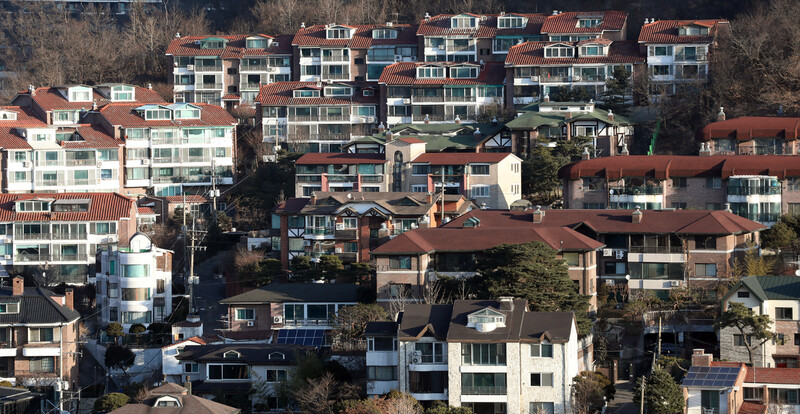Announcement of housing supply measures on the 4th
‘Public development’ method instead of private initiative
Soaring house prices covering Busan, Daegu and Gwangju
Simultaneous bundle supply for balanced development
It seems to contain strong anti-speculation measures.

A villa village in Seoul. yunhap news
On the 4th, the supply plan that the government decided to put out before the Lunar New Year will be announced. Through the’city-center public development’ model that develops old residential areas in the city center with the public initiative, and the designation of new residential areas such as the metropolitan area, plans to supply new housing units of 300,000 units in Seoul and 850,000 units nationwide are expected to be presented. The area and volume covered by the supply measures are larger than expected. The framework of the supply plan to be announced this time is expected to be a’city-center public development’ that significantly improved the problems of private-led redevelopment and reconstruction, which had side effects such as monopoly of development profits and stimulation of house prices. It is a model that shares development profits by securing public housing in the form of donations, rather than enhancing business feasibility by easing regulations for low-rise residential areas in urban areas that require redevelopment and reconstruction, but have not progressed for various reasons. The new Minister of Land, Infrastructure and Transport Byeon Chang-heum, after being nominated as a candidate in December of last year, suggested this direction at an online conference with reporters. At the time, he said, “There is a potential site of 40 million pyeong or more that can provide additional housing in downtown Seoul.” ) And undeveloped station areas. In addition, contrary to the prediction that the target of the supply plan will be limited to downtown Seoul, it is expected that a supply plan for balanced national development will come out covering the old downtown areas of major metropolitan cities such as Busan, Daegu, and Gwangju, where apartment prices are recently rising. On December 18, last year, major metropolitan areas such as Busan, Gwangju, and Daegu were designated as areas subject to massive adjustments. Is said to have been in the government. As President Moon Jae-in emphasized “the drastic development of new residential land” at a New Year’s press conference on the 18th of last month, it is highly likely that new residential land candidates will be announced in the metropolitan area. Like the public reconstruction or public redevelopment model that came out in the 5·6 or 8·4 measures last year, it is known that various incentives such as easing floor area ratio will be presented for this urban public development. In 2008, when Seoul started public development in the station area, an area equivalent to 60% of the floor area ratio increased as an incentive was to be supplied as long-term jeonse housing (shift). However, this time, it is expected that a kind of’housing mix’ (social mix) can be achieved in the newly constructed housing complex, including public sale as well as public rental, when accepting donations. While there are observations that 200,000-300,000 units will be supplied in downtown Seoul alone, there is a high possibility that strong measures to suppress speculative demand, such as strengthening the land transaction permit system, will be included as concurrent developments are underway in various parts of the city. Since the current land transaction permit system does not apply to transactions of land less than 18㎡ in residential areas, a plan to adjust the lower limit is discussed. By Jin Myeong-seon, staff reporter [email protected]
